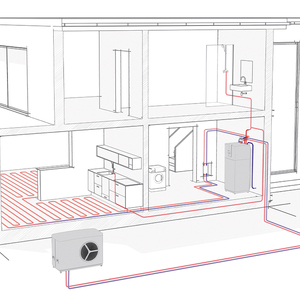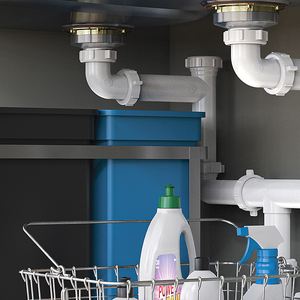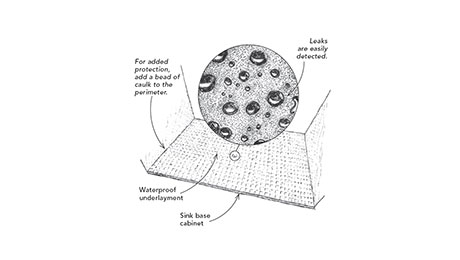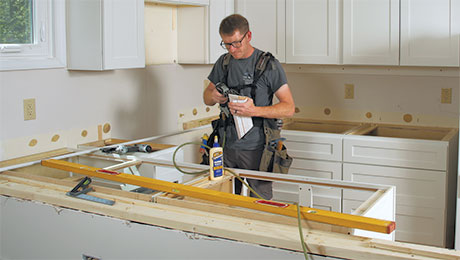How to Hide Your Refrigerator
Turn your ordinary icebox into a stylish focal point.
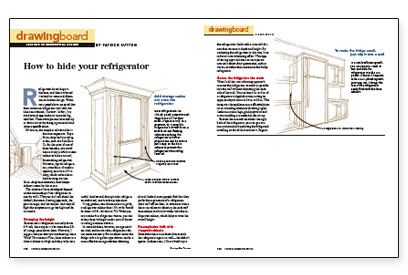
Synopsis: This article focuses on four innovative designs that integrate cabinetry with refrigerators in order to downplay height, de-emphasize bulk, add storage space, and transform eyesores. Learn how to recess your fridge, add side or bottom cabinets, and turn your ordinary icebox into a stylish focal point.
Refrigerators loom large in kitchens, and their awkward size leads to some real dilemmas in kitchen design. While most people have accepted that their immense refrigerator will stick out like a sore thumb, I haven’t. In fact, I’ve tried several approaches to tame the big, cold box. These examples can be scaled up or down in cost by changing materials and joinery specifications.
Of course, the simplest solution also is the most expensive: Buy a 24-in.-deep built-in refrigerator, such as a Sub-Zero. Or, for the price of one of those beauties, you could have a nicely crafted custom cabinet to hide a normal, freestanding refrigerator. However, typical refrigerators, even those of modest capacity, are at least 30 in. deep, which makes them hard to integrate into 24-in.-deep base cabinetry. And deeper cabinets mean harder access.
The solutions I have developed depend on the relationship of the refrigerator to nearby walls. They are (as I call them) the default, the smart-framing approach, the pass-through, and the temple. And they all fight the temptation to go too high and do too much.
Downplay the height
Because most refrigerators are only about 6 ft. tall, there appears to be more than 2 ft. of storage space above them. However, I suggest that you don’t put a cabinet up there. Why? Two reasons: First, those cabinets are almost always too high and deep to be very useful. And second, they give the refrigerator awkward, unattractive proportions.
Using golden-ratio dimensions as a guide, a refrigerator cabinet that’s 3 ft. wide should be closer to 5 ft. tall than to 7 ft. While you can’t make the refrigerator shorter, you can at least keep its height under control by not installing a cabinet above it.
In some kitchens, however, storage needs are vital, and an over-the-refrigerator cabinet seems necessary. But a cabinet under the fridge with a large bin-type drawer can be a more effective storage solution. Indeed, many people find that they prefer the ergonomics of a refrigerator that’s well off the floor. In situations where there’s no adjacent cabinetry, the pedestal/ base cabinet can be a lot wider than the refrigerator cabinet, which helps to tame the overall height.
De-emphasize bulk with stepped cabinets
Sometimes there is no choice but to stick the refrigerator against a wall—the default option. In these cases, I like to build up to the refrigerator’s bulk with a series of cabinets that increase in depth and height. By anchoring the refrigerator in this way, I can reduce its overwhelming effect. This type of tiering approach also can incorporate unusual cabinet-front geometries, such as curves, to soften the transition to the bulky refrigerator
For more drawings and details, click the View PDF button below:



